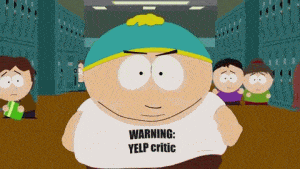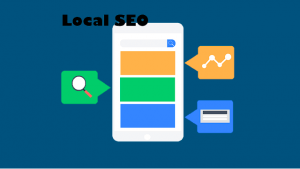Shop local, has been an endearing term over the last few years. You may have noticed a few other local businesses pop up in your area. You may even have a few competing businesses in your city. This is exactly why it’s important for you to start working on your local SEO.
There are a few ways to get serious about local business marketing and SEO. The good news is, it isn’t difficult to do. There are also a ton of local SEO resources out there for your consumption. Between videos, classes, and webinars, you can quickly become SEO efficient.
Why would a business care so much about their SEO ranking? Well, unfortunately, customers don’t want to do a lot of research. Okay, there are certain things that permit in-depth research. But, most of the time consumers search a keyword and only browse the first page of results. So, if you’re listed on page 4 or above, you may never even get looked at.
Being higher-ranked allows you to be seen. Not only that but if your phone number or business details are listed, a smartphone user is way more likely to contact you over another listed business without this information. You’re starting to see why being locally optimized it helpful, right? Before that, if you want an overly simplified understanding of how SEO works, check that out.
Start trying to get yourself some local search traffic, through SEO (Search Engine Optimization). Let’s start off with a few tips to get you going.
1. Claim & Optimize Your Google Business Page
Grab your Google My Business Page. You may or may not already have your Google Business Page. Chances are your business will already be listed, but it may not be claimed. If this is the case go ahead and claim the page and start updating the information. Or if your business is not listed at all, go ahead and set up a page. If you need help, there are a ton of videos out there, like this one, if you need help setting up your business page.
Locate your page
As mentioned earlier, your page may already exist. Or, it may exist a few times. However you find it, make sure you do a little TLC. Once your page has been claimed you need to optimize your page. Go ahead and delete duplicates. Verify your page details and make sure they represent your business. This is essential, especially for local business owners. This is how your business will show up for local searches. Here are some items that you should double check.
- Is the email listed correctly?
- NAP(name, address, phone numbers) & Consistency Do these items match what is on your website, brochures, business cards, etc? Be sure these items are the same across all boards. Meaning your website, business cards, social media pages, etc. all match.
- Double check that your business is listed in the correct category. If someone searches ‘salon services’ in the area, but you’re listed as a different type of business, you may not be found!
- Provide the correct information, period. Make sure the correct website URL is listed and the hours of operation are accurate. Having correct details is the key to a proper listing. So take your time to verify all information listed. Whether it be a URL or a description, the more accurate the information, the more optimized you’ll be.
- Add a map, images, reviews, or even get fancy with a virtual tour.
2. Add Yourself to Local Listing & Review Sites
You may have a few reviews already on your Google Business Page. There are many other options for getting reviews and getting your business out there. Most businesses find it helpful to list themselves on a few different sites, just to cover their bases. Your customers have you in common, but they may have preferred websites for finding local listings. This means you really need to put yourself out there. Some people swear by Yelp, while others may prefer smaller more localized listings.
Add yourself to a few more listing sites and scrub your existing ones. Luckily for you, many business listing sites offer free listings. Which means you can really spread yourself out. Poke around and see what ones work best for you and what ones have similar businesses in your area listed. Chances are if competitors are listed, people are using that tool to look for businesses like yours. If you already have some profiles on listing sites, be sure to scrub the information, accuracy is key.
Some tips:
- Create a spreadsheet of all the listing sites you’re on. This makes editing information in the future a lot easier. You won’t have to ‘remember’ or frantically search through all the listings.
- Create a document of all the basic listing site information you need. Not only will this help cut down on time, but it will help you stay consistent. Copy and paste are your friends when it comes to listing sites.
It should be noted that a lot of searches happen via search engines, but listing yourself on local listings and directories is important. You wouldn’t want to risk the chance of being glanced over because you weren’t listed on a local listing site. Another tip: provide great customer service and a great product and people will talk, and be more inclined to write a review.
Don’t be afraid to ask for reviews
People undoubtedly rely on reviews, whether it be word of mouth from a friend or a review from online. Why are online reviews great? One, to state the obvious is that they give your business validation. On top of making you look good, reviews are essential to having good local SEO rankings.
Reviews can be hard to get. This is why asking happy customers and asking often is a good strategy. Think of the big picture, the more people are talking about you, the more you will be seen.
3. Use Moz Local
Moz Local is an incredibly helpful tool that allows you to get ranked. It puts you “in the conversation” when someone searches for you online. Another perk is that it is very affordable.
What Moz Local does is it creates and maintains business listings on different sites and directories that influence the most local search results. All you need to do is upload your location data. Then you can use Moz to create and update your listing, which will push your business to data aggregators.
They have a free weekly webinar all about Moz Local. I’d check it out if I were you.
4. Localize Your Content
Yes, you read that correctly. Not every single article you write has to say where you are and what you do. But, if you’re a business who relies on local interactions you may need to spell it out. Sorry to tell you this… But, once something is posted to the web, people other than your immediate community can find it.
So what are some ways you can make sure your content is localized without being spammy? If your business has a blog, highlight local events or businesses in the community (especially ones that you’re teamed up with).
If you use WordPress for your blog, you could also try some plugins. The Local SEO for WordPress plugin may be a great fit for helping you localize each blog post. The plugin gives Google and other search engines the information it needs to show your company in the local search results. The cool thing is, it will display the correct information regardless of how many locations your business has. Try doing a local SEO audit on yourself!
5. Fill out Meta Data & Snippets
This little section provides customers with a whole bunch of information. If you’re concerned with getting ranked locally, then make sure this tidbit mentions your local area. This is the brief description that shows up in search results. So, you can see why including your city and state can be beneficial.
Let’ be real, local SEO actually is dependent on traditional SEO factors. Which means, filling out your metadata description is important regardless of being local or not. So meta description may not play directly into the ranking, but if your location is including you may get more clickthroughs.
So what’s the take home? Make sure your SEO is good, and local SEO will also work well. Feel free to check out our favorite SEO blogs.







